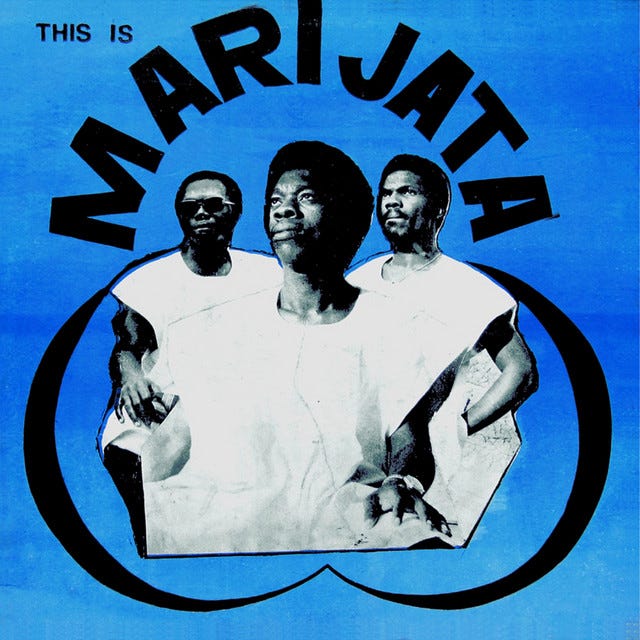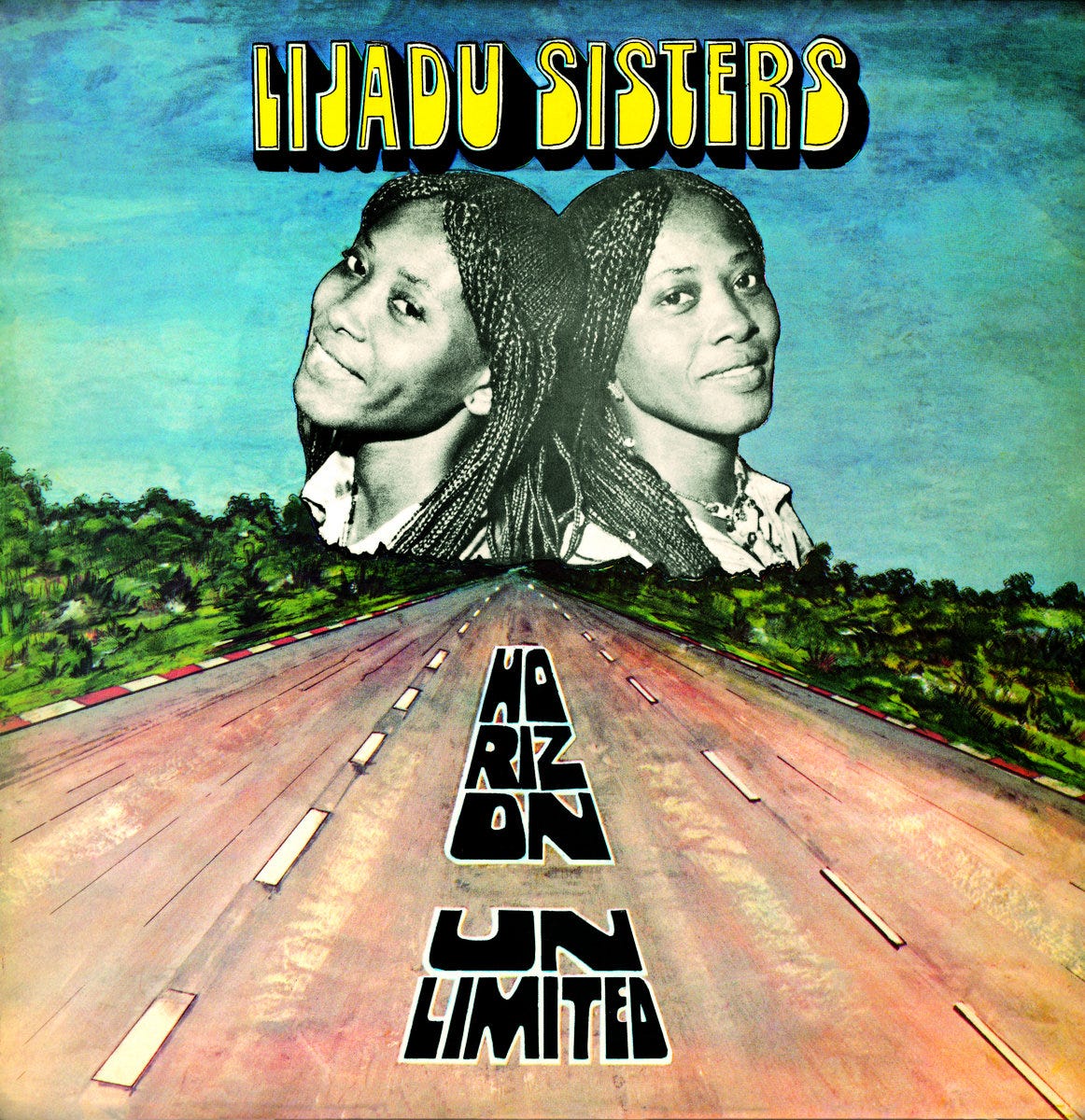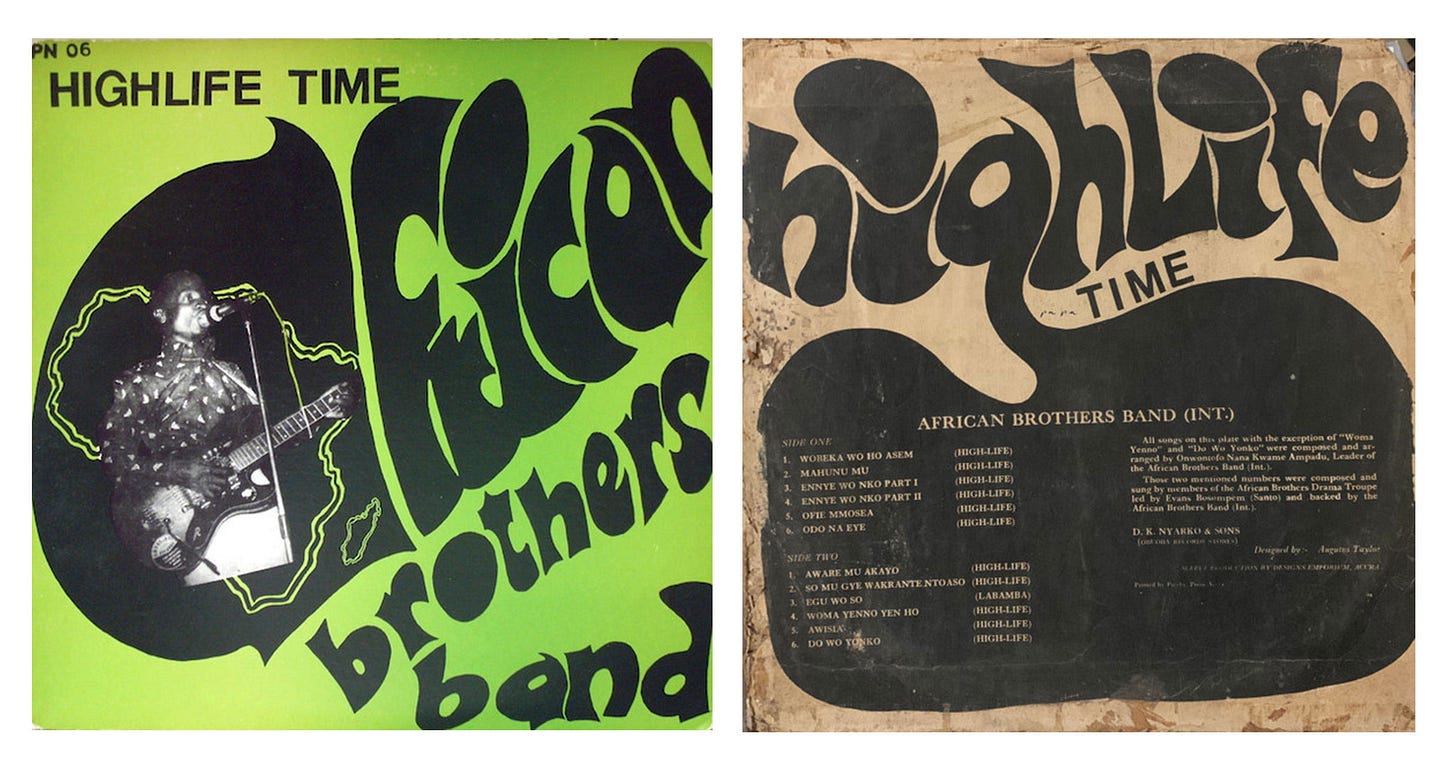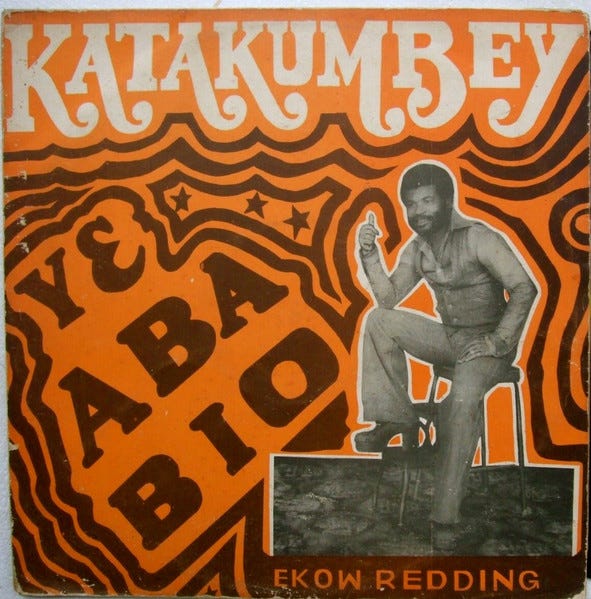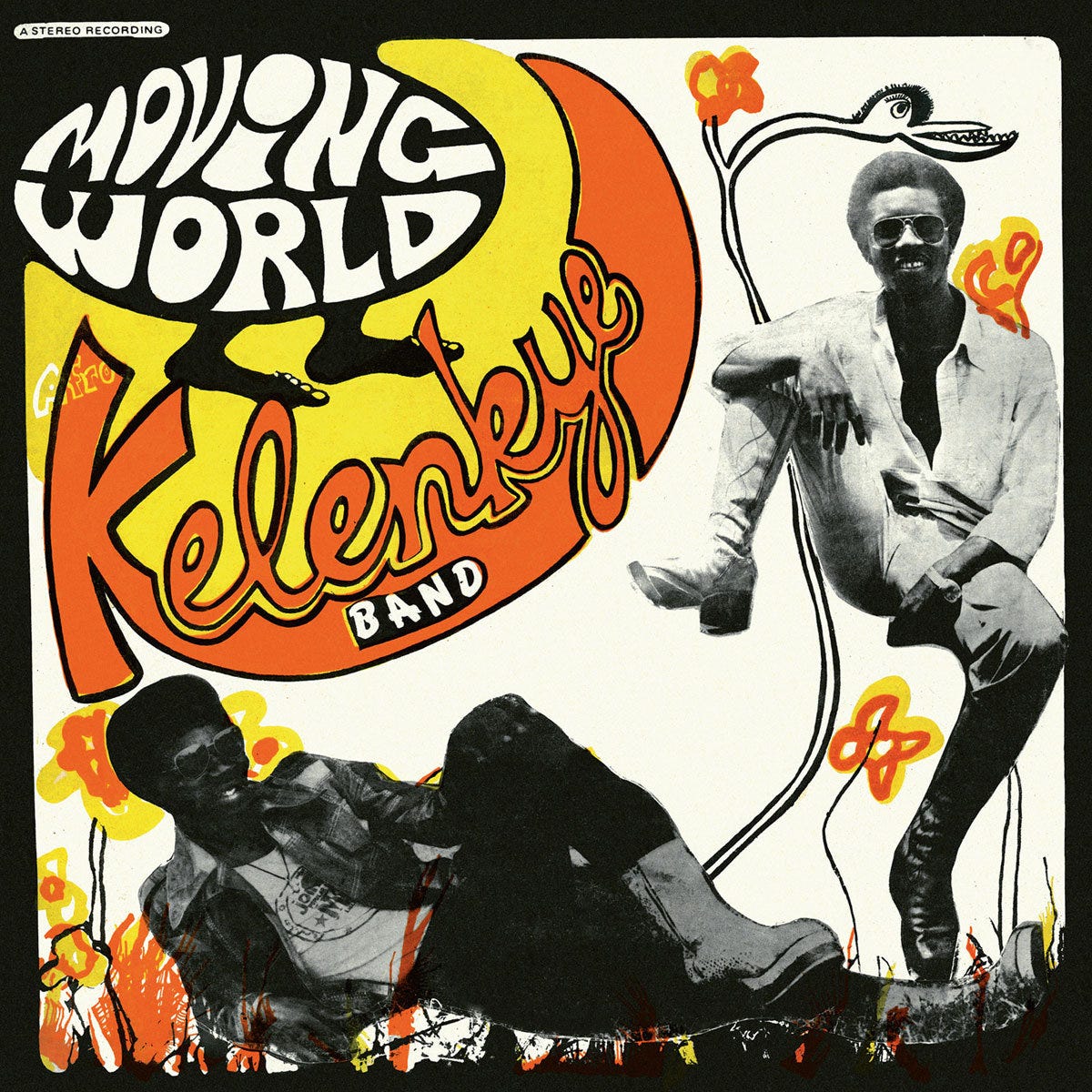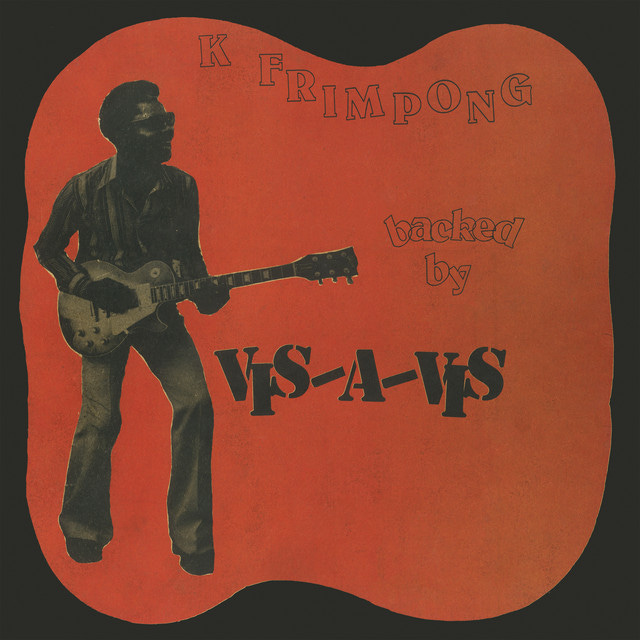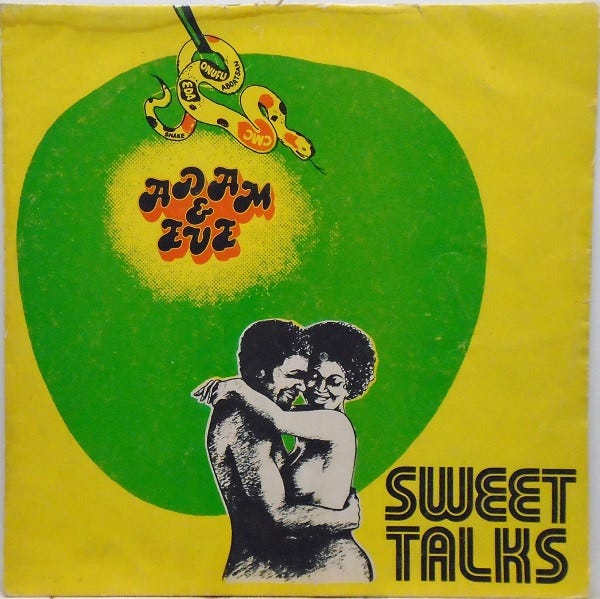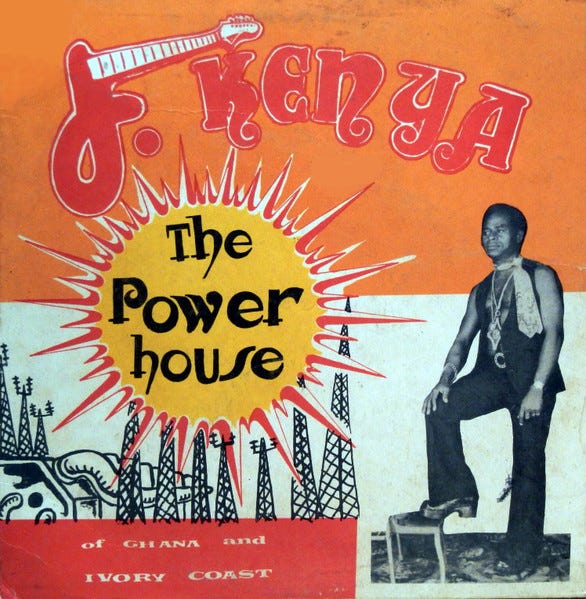The Playful Energy of 1970s Highlife Covers
Diving into the collages and illustrations behind the African album art
Highlife music originated in Ghana in the early 20th century during its period of British colonization. The genre combined the traditional African Akan rhythms with the Western styles of calypso and foxtrot. When Ghana gained independence in 1956, guitar music and pop flooded into the country, putting the genre on the back burner until the early 1970s, when Highlife experienced a revival due in popularity to artists like Nigerian musician Fela Kuti. According to Discogs, the most Highlife records ever released were during its peak in the 70s, followed by the 80s. Influenced by Highlife and various Yoruba musical genres, the famed Kuti is credited with creating the off-shoot of Afrobeat.
In 1954, prior to Ghana's independence, the country’s first record label, Ambassador Records Manufacturing Company, was born. Founded by A.K. Badu, it released hundreds of records by African artists and paved the way for labels to come, like Gagophone (responsible for the popular 1976 releases of This is Marijata by Marijata and My Love & Music by Ebo Taylor). Many other famous Highlife & Afrobeat musicians include E.T. Mensah and the Tempos, Awura Ama Badu, and the African Brothers Band.
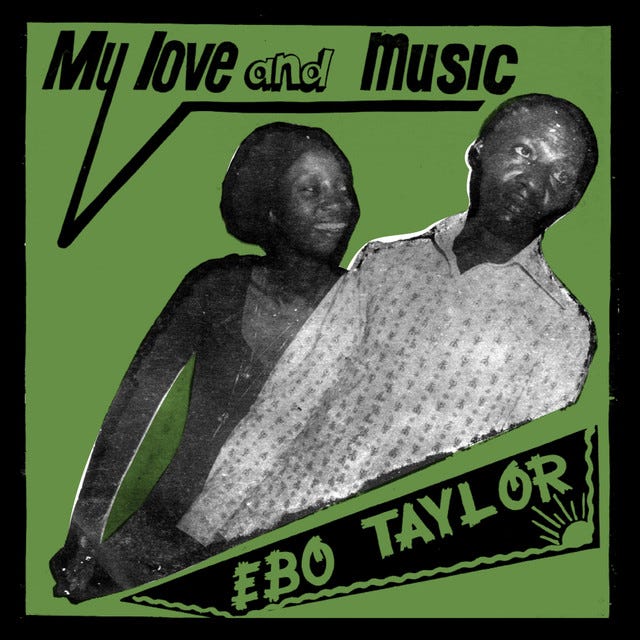
Designed by Leos Advertising Services, both Gagophone covers focus on cut-out photographs pasted against colorful backgrounds. While simple in scope, the jagged lines of the photos and letters resemble the high-energy movement of the music they describe. This collaged style is seen on various other Highlife and Afrobeat records, spanning the entire 70s decade, like Fela Kuti’s Open & Close (1971) and Lijadu Sisters’ Horizon Unlimited (1979).
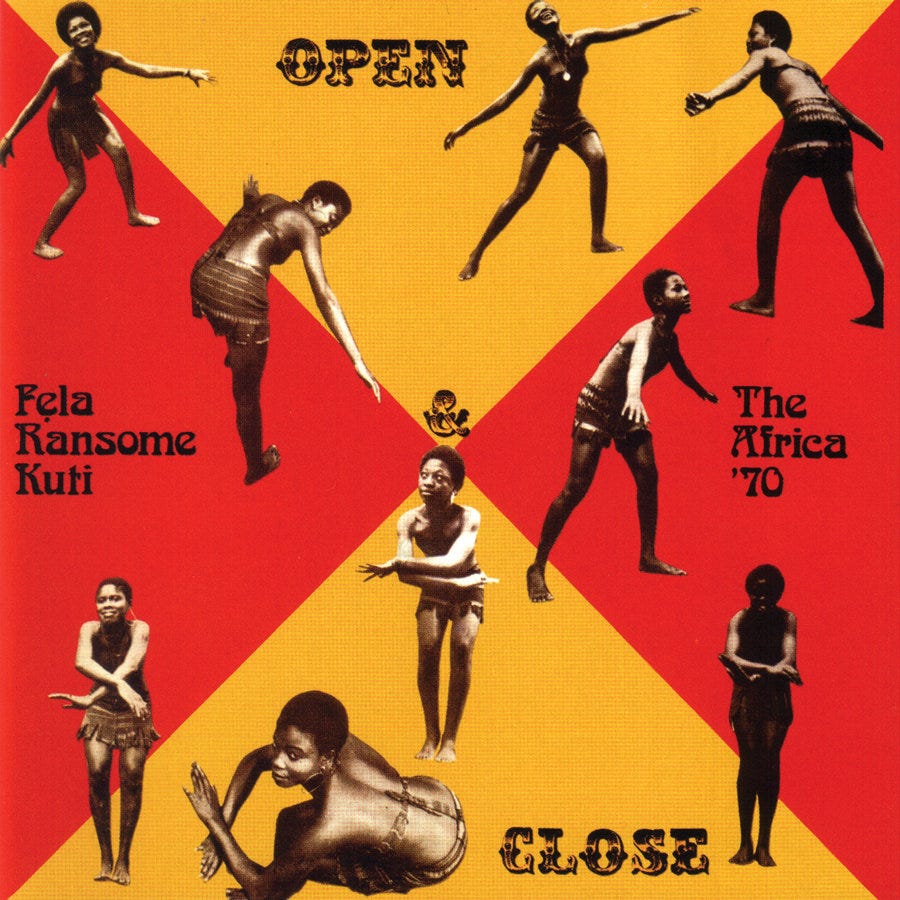
Ghanaian designer E. E. Lamptey is one of many artists who helped push this collage aesthetic forward. Both a photographer and a designer, his skills in both mediums created a distinctive look across the hundreds of covers he made. On the two album covers below, Tony Sarfo & The Funky Afrosibi Superman (1976) and the eponymous K. Frimpong & His Cubano Fiestas record (1977), we see Lamptey has left loose outlines of color around the musicians, creating a “jumping off the page” effect. On many of his other covers, Lamptey uses other design techniques to anchor the musician as the focal point on the cover, as seen below. Other notable sleeve designers during this period include Mike Owusu-Siaw, Biodun Odunsi Eshilokun, Mantsefio Bampoe, and Augustus Kerry Taylor, among many more.
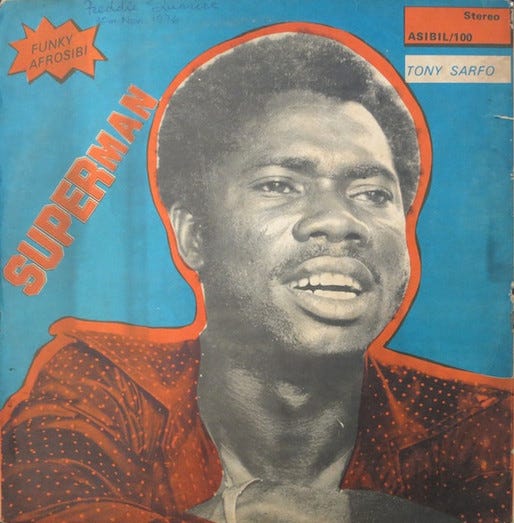
The typography on many Highlife records is inventive and playful, not tied to a manufactured font. The Gramophone Records Museum and Research Centre of Ghana notes in their exhibition Ghanaian Album Covers as Art that many African illustrators and graphic artists, who worked on album covers, were first trained as sign writers, which lends to the handwritten feel seen on many records. The Museum explains the artists “acquired their skills through self-training by copying portrait examples from textbooks, illustrations, photographs, foreign magazines, and local newspapers. From this point, they later learned to draw by imagination. However, many of the drawings and paintings they did were not controlled by strict duplication of the exactness of nature.”
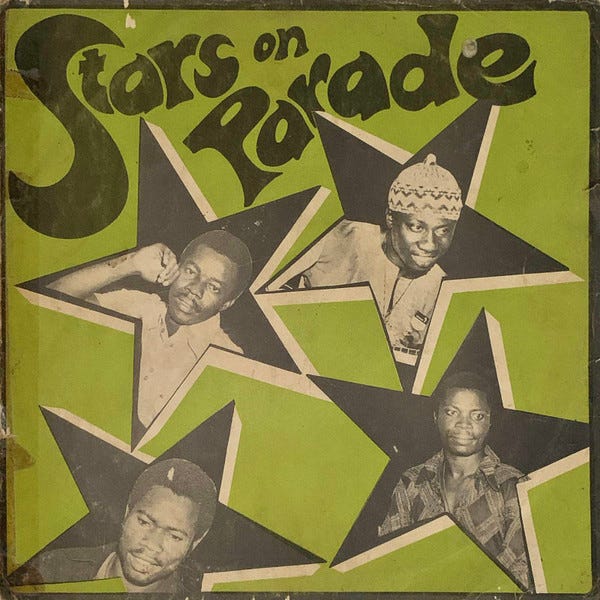
The Gramophone Museum also mentions that besides collage, illustration was also a popular medium seen on many Highlife and Afrobeat album covers. Noted earlier, the Lijadu Sister’s Horizon Unlimited (1979) is a great combination of the two mediums. The duo’s three previous LPs also all feature an illustrated cover. Other beautifully illustrated covers include Kelenkye Band’s Moving World (1974) and F. Kenya’s The Power House (1975). See these, plus more Highlife & Afrobeat record covers below:
Bonus Reading: Last month, I explored organic, intuitive ways of understanding art with Syllabus, a weekly publication that explores how a syllabus can become a creative tool. In the piece, I include various exercises for how to connect art (and album covers) to the world around us.
The Art of Cover Art is a free educational and inspirational resource. If you have $5/ month to spare, it would be very helpful in furthering my research. Or, if you think a friend might enjoy this newsletter, the best way to pay it forward is by sharing!




